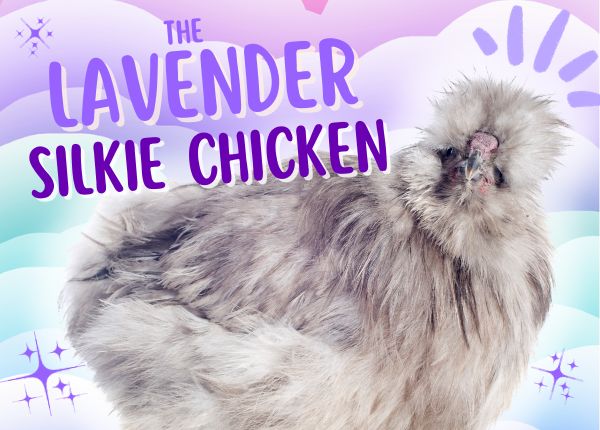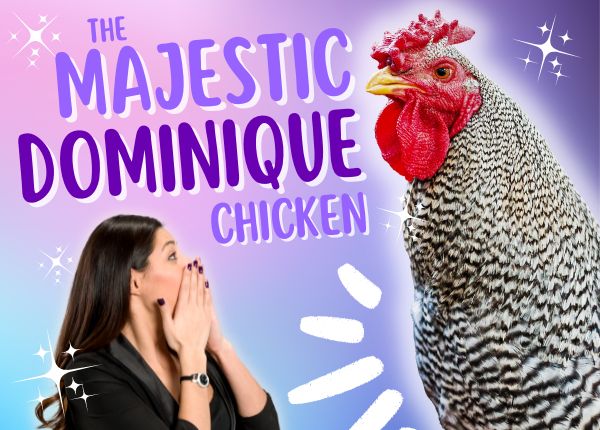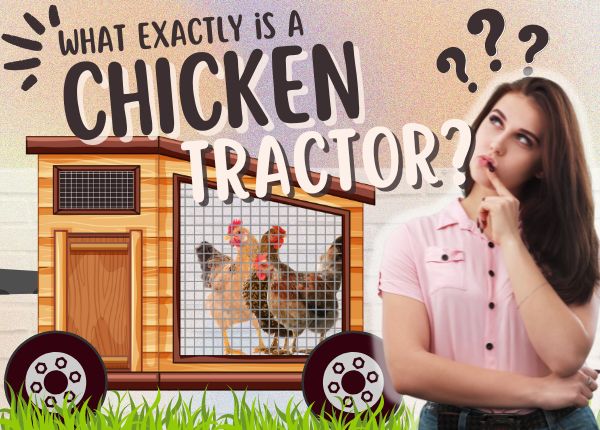
Bred for their beautiful brown eggs and adored for their divine, double-laced plumage, Barnevelder chickens certainly stand out in the chicken crowd!
These happy, homestead hens aren’t just easy on the eye, they have a lot going for them! They’re easy-going, friendly, and fun. They’re dependable layers and they’re quiet and considerate beginner-friendly backyard birds. It’s no wonder that Barnevelders are pecking their way up our chick-wish lists.
When you see a Barnevelder for the first time you can’t help but stare. Not in a bad way, but in a good, I-really-want-one-of-those kinda way. It’s their distinctive arrowhead-patterned plumage that wows us.
 Barnevelders are mainly recognized for their stand-out-in-a-crowd double-laced feathers, but they were originally bred for their coveted brown eggs, and not their looks. The Dutch wanted to capitalize on the British brown-egg craze, and the Barnevelder was designed purely to fulfill that need. Barnevelders lay over 200 large brown eggs a year.
Barnevelders are mainly recognized for their stand-out-in-a-crowd double-laced feathers, but they were originally bred for their coveted brown eggs, and not their looks. The Dutch wanted to capitalize on the British brown-egg craze, and the Barnevelder was designed purely to fulfill that need. Barnevelders lay over 200 large brown eggs a year.
Over time, breeders started valuing their feathery form over function. Sure, people still wanted brown eggs, but the birds with the sharpest looks were the ones we took home…we’d all gone a bit double-lace crazy. The focus shifted to enhancing their unique plumage, rather than breeding stock based on those deep brown eggs.
The result? Barnevelders, or ‘Barneys’ as they’re more affectionately named, are prettier than ever with increasingly defined feathering and in several stunning color varieties, but their eggs are not quite as brown as they used to be!
“Each breeding season our objective is to breed more for the double laced pattern. The Barnevelder chicken is rare to find in the USA but becoming more popular each year.” (Cackle Hatchery)
If you’re after a cold-hardy egg layer, a friendly and low-maintenance pet chicken, or a show-worthy show-stopper of a hen, that also lays really well, then you need to read on. This may well be the breed for you!
This article covers everything you need to know about Barnevelders as homestead or backyard birds: what they’re like, what they need, where they’re from, what to watch out for, and the beautiful brown-shelled eggs that you’ll get in return.
Oh, and I’ll tell you the secret to picking the Barnevelder that’s most likely to lay deep brown eggs!
Whatever breed you decide on, chickens need more than just feed and water. Keeping chickens is one of the most rewarding things I’ve ever done, but only after I sussed out that I needed help, and accepted that I didn’t have the time or the confidence to scramble through all the conflicting information available. I just needed a simple system I trusted. I found Chickenpedia, and then I could breathe and enjoy my chickens.
“I've had chickens for only 10 months and feel like it's been one problem after the other. First we had mites, then one of my daughters hens died, then we had egg laying issues - it was never ending. The mites took over $250 to fix and it was disgusting, and it all could have been prevented had I known earlier! Your courses have given me so much confidence and I just LOVE your monthly step-by-step support program. My hens have never looked so healthy! (Christa, TX)
YOUR TOP 5 BARNEVELDER QUESTIONS ANSWERED:
In a recent survey we completed, of chicken keepers surveyed, at the time of writing this article, 59% said they received 5 large eggs per weekfrom their Barnevelder hens and unsurprisingly 97% said they would choose to own a Barnevelder again.
Are you convinced or need convincing? Read on…
1. What Are Barnevelder Chickens Like?
Barnevelder chickens have a chilled-out, easy-going, cheerful, and friendly temperament. They’re so laid back that they’re sometimes accused of being a bit lazy. Maybe they can be, but it’s that placid personality trait that makes them such great backyard chickens. They’re also high up on the list of kid-friendly chicken breeds.
2. Are Barnevelder Chickens Easy to Keep?
Barnevelder chickens are one of the most beautiful beginner-friendly chicken breeds there are. They’re easy to care for and they’ll greet you, chat with you, and bond with you, making them even easier to love.
It’s easy to assume that a show-worthy breed like this could be overly ambitious for a chicken-keeping newbie, but they are beginner friendly!
Barnevelders also make brilliant backyard birdsbecause they’re not too noisy and can handle confinement, so long as your backyard isn’t too compact. Since Barnevelder hens are larger ladies they need their exercise otherwise their lazy nature gets the better of their waistlines!
3. Are Barnevelder Chickens Suitable for Family Pets?
Barnevelder hens are great with kids. Most Barnevelder hens are so placid, amenable, easy to handle, and friendly that they are often chosen for young families and even as 4H or farm project hens. Like any chicken breed - some individuals may buck the trend.
4. Do All Barnevelders Lay Brown Eggs?
Barnevelders were bred with one goal in mind: brown eggs. There are only a small number of chicken breedsthat lay brown eggs, and the Barnevelder is the newest of the chocolate-egg-popping gang.
Have you heard the rumors that not all Barnevelders lay brown eggs? Let’s crack open the gossip:
Most Barnevelder strains have started laying lighter-brown eggs as the years have gone by. Consciously, or subconsciously, we began breeding our birds based on their looks and not their egg coloring, so the hens with the most beautiful and defined lacing often lay lighter brown eggs. If dark brown eggs are high on your priority list you needn’t rule the breed out: heritage strains still deliver the darker brown bounty.
Barnevelder hens lay their darkest eggs when they are young pullets and their eggs lighten in color as their laying season goes on, during a molt, and as they get older.
Show-worthy hens can sometimes have light brown, or tan-colored eggs which sometimes have pretty little speckles on them.
Barney owners often describe how their hens' eggs vary in size and shade with no apparent pattern, but let's keep a little persp-egg-tive here: they are still beautiful eggs!
Marans chickens are known to lay the darkest brown eggs, but just like the Barney, breeding Marans for their clooks in recent years has also diluted the depth of their egg coloring.
Find out more about the famous chocolate-brown egg-laying Marans here!
5. How Many Eggs Do Barnevelders Lay
- Barnevelder hens lay 3-4 eggs 🥚 each week and over 200 eggs a year making them very decent layer hens.
- Barnevelder eggs are large and weigh 60–65 g.
- Barnevelders have been known to lay some jumbo-size eggs that can weigh two to three ounces. Hungry? I hope so!
Intrigued? Let’s get to know Barneys a little better…
6. Where Did Barnevelder Chickens Come From?
Barnevelder Chickens are newcomers to the world of chickens. Unlike Dominiques that have been around since the 1600s, Barnevelders are one of the most recently recognized chicken breeds in the US.
Barnevelders were bred by the Dutch in a town called Barneveld. There was a large agricultural college in Barneveld specializing in poultry, meaning the town was a hive of chicken activity in the early twentieth century.
The area supplied eggs to Europe where the egg market was huge, and the English specifically wanted brown-shelled eggs.
The Dutch had three objectives with this breed; they wanted a chicken that laid desirable deep brown eggs, laid well enough to satisfy the UK markets, and was hardy enough to handle cold European weather. Those stunning feathers we all know the Barney by now – they were just a happy accident!
The Barnevelder’s ancestry is likely to include local and landrace breeds, along with newly introduced oriental birds. It’s very likely that Langshans, Malays, and Brahmas have their place in the family tree.
We know that Golden Laced Wyandottes were introduced to the Barnevelder bloodline in In 1898, and there was a lot of variety in the appearance of Barnevelders around that time.
The Barnevelder Breeders Association was formed as the breed became more popular and they successfully standardized the breed which was then quickly recognized by The Poultry Club of Great Britain in 1923, and eventually by the American Poultry Association in 1991.
So, let’s see what makes a Barney a Barney…
7. What Do Barnevelders Look Like?

Barnevelders are large birds with compact, rectangular bodies and curved or u-shaped backs. Their wings are high up on their bodies, their necks are slightly arched, and their tails are perky little things standing upwards at about 50 degrees.
Barnevelders have a single, 5-pointed red comb, red wattles, and red ear lobes. Their eyes are red, their legs are various shades of yellow, and their beaks are horn colored.
Many Barnevelders are uniquely beautiful due to the double-laced or arrowhead patterning on their feathers, however, not all varieties have this famous patterning. You’ll see it in the original golden double-laced variety, which has brown feathers with double black lacing, and a few other double-laced color varieties have been developed, though they can also be seen in black, brown, and white varieties that have no patterning at all.
It’s also just the hens that get to strut their double-laced stuff. Barnevelder roosters are a melanistic black-breasted red color, and efforts to breed roosters with double lacing on their chest have failed.
Whatever the color, Barnevelder’s feathers sit close to their bodies, helping them handle colder conditions well.
8. Barnevelder Varieties:
Not all Barnevelders are now double laced, although this was the original feathering pattern for the breed and is still undeniably the most popular variety, the easiest to get hold of, and the patterning most associated with the breed.
The American Poultry Association officially recognizes six varieties of Barnevelder. There were nine commonly accepted varieties available until recently, but one of those – the partridge – is now sadly suspected to be extinct.
- Double Laced Barnevelders
Also known as the Continental Barnevelder of the Double Laced Golden Barnevelder, these officially recognized lovelies are easy to get hold of and are black with a sharp mahogany edging.
- Double-Laced Blue Barnevelders
These pretty poultry gals have reddish-brown or mahogany feathers 🪶 with a bluish-grey edging.
- Silver-Black Double-Laced Barnevelder:
They have silver feathering with black edging. The silver color is light grey.
- Black Barnevelder:
Officially accepted and black all over, without any patterning. They originally had some brown coloring mixed into their plumage, but they’re now one of the limited numbers of black chicken breeds.
- White Barnevelder:
Officially recognized and entirely white with no patterns.
- Silver Blue Barnevelder:
The hardest variety to get hold of, they have blue-grey feathering with a brighter silver edging.
- Chamois Barnevelder:
Officially recognized, and a beautiful white color with a golden, double-laced pattern.
- Dark Brown Barnevelder:
Officially recognized and entirely brown with no patterns. The head and neck tend to be the darkest brown.
- Partridge Barnevelder:
The Partridge Barnevelder is a dark reddish-brown color. Partridge is one of the oldest varieties but in modern times is one of the rarest. Most people agree this color may now even be extinct.
- Isabel Barnevelder:
This variety is not officially recognized, but they are a lovely lavender shade with a golden edging. The lavender might be better described – in my opinion – as a very pale grey with a purple tinge.
9. How Big are Barnevelders?
Barnevelder chickens are large birds with hens weighing 5-6lb whilst roosters are a little heavier at 7-8lbs.


10. Barnevelder Bantams
Barnevelder bantams are not officially recognized in the standard, but they’re cute, they’re fluffy, and they’re affordable.
Bantam Barnevelder hens weigh around 800g and bantam males around 1kg. Bantams are not as easy to get hold of as large fowl Barnevelders, and as a result, they tend to cost a little more than most bantams to purchase.
11. What Are Baby Barnevelder Chicks Like?
Barnevelder chicks should always have a single red comb and yellow legs. As chicks, all Barnevelder varieties have one thick brown stripe that runs down their backs, two white stripes that run either side of this, and also thinner black stripes.
Different varieties show different clarity and depth of the stripes, but they don’t indicate what gender or color Barnevelder you have.
12. Barnevelder Hen or Rooster?
Barnevelders are very hard to sex and you won’t know what you’re dealing with until chicks are 12-16 weeks.
You might read that you can sex a Barnevelder by the color of their breast from a young age, but please take this no-good nugget of gossip and toss it over the fence. It’s not true.
Barnevelder chicks arrive all yellow and fluffy and can develop white, yellow, grey, or black breasts. Their color doesn’t indicate their gender, just the undercoat color to expect when your chick grows up.
There are a few things to watch for when hoping to guess the sex of your baby Barney, but these are more indicators than rules. Don’t make any big decisions based on these.
Whilst the coloring is different in hens and roos, it takes a long time for their coloring to show, so your best bet is to watch how they develop compared to other chicks in their clutch.
Female Barnevelders feather up faster with feathers covering their tail last. Male Barnevelders seem to be last to feather up, and they do it in a messier and rugged-looking way, but their tails feather up at the same time. As a result, young cockerels tend to look more elongated and pointier than the girls do.
Male Barnevelders are larger than hens and their legs are bright yellow whereas hens have a darker, more mustard or golden color.
As your Barnevelders feather up the deeper red feathers in males tend to be confined to their backs and wings whereas in females it's a softer red that is spread more evenly over their body.
13. Are Barnevelder Roosters Aggressive?
Barnevelder roosters are not known to be aggressive toward humans and are less aggressive than other large fowl breeds towards each other. They will defend their feathery families tough.
Barney Dads can be surprisingly sweet and are known to step up and help raise their peeps. They are also one of the few breeds where roosters are often happy to be around children, so long as they are handled regularly from a young age.
Beware the bantam Barney roo! These little gents are more aggressive than their bigger brothers and can occasionally get snappy toward their handlers. Unless you want to breed, bantam Barnevelder boys are probably best left to the experts.
14. Can Barnevelders Fly?
Barnevelder chickens have short wings that are positioned quite high on their characteristically u- shaped backs. As a result, they don’t fly very well. For most keepers, this is good news and makes containment easier.
15. Are Barnevelders Good Backyard Chickens?
Barnevelders make great backyard birds if they have enough room to enjoy a large run or free range. As friendly fowl who are frankly a bit too lazy to bother causing a kafuffle, they’re not likely to bother the neighbors.
Since they can’t fly, they won’t be hopping over any high fences. They’re easy to care for, and they deliver a strong supply of large yummy brown eggs.
16. Are Barnevelder Chickens Able to Free Range?
Barnevelders are mainly active and alert and they make great foragers, meaning that they’re very happy to be kept free range. They’ll find lots of Mother Nature’s food which will reduce your chicken feed bill, and they don’t fly or tend to wander off.
On the flip side, they will tear up your lawn if you’re thinking of letting them roam free on your manicured grounds.
Some Barnevelders are said to show lazy tendencies, so letting these larger ladies free range can help avoid them piling on extra pounds.
Barnevelders are also chilled out enough to be happily contained as backyard birds, so long as they have a decent-sized run.
17. How Much Space Do Barnevelder Chickens Need?
Barnevelders are quite big chickens, but they don’t squabble much – because they can’t be bothered – so a standard 4 x 4 foot per chicken in the coop will suit them fine. They should have access to at least 25 square feet per chicken in their run, and about 250 square feet per chicken if they’re clucky enough to be living free range.
Try to allocate 8 – 12 inches of roost bar per chicken too.
“It is not recommended to keep chickens of this breed in cages or in a limited and confined space, because due to a lack of physical activity in birds, muscles atrophy, as a result of which blood circulation in the legs is impaired and joint diseases are possible.”(Barnevelder Club)
18. How Long Do Barnevelders Live For?
Barnevelders live for 7-10 years, although some have been known to reach the grand old chicken age of 13! Caring for chickens the right way will significantly improve their health and lifespan. How? Click here to learn more.

19. Marek’s Disease in Barnevelder Chickens
Barnevelders are cold hardy and tough chickens, but they do have a few breed-specific health issues to be aware of if you want to dodge disaster before it strikes.
Barnevelders are highly prone to <Marek’s disease><link to article> and should be vaccinated early to avoid heartache. It’s cheap and easy to do, and most breeders will handle this for you if you ask.
“Mareks Disease - Occurs generally in chickens younger than three years old -Is a Herpes Virus Disease. Try to purchase vaccinated birds but this does not guarantee that they will not get the disease. Often causes Lameness and falling over - and once diagnosis of Marek is confirmed is usually fatal at bird vets Melbourne.” (Bird Vet Melbourne)
20. Donald Duck Syndrome in Barnevelders
Duck syndrome is a beak deformity caused by a nasty gene that is rare yet lethal. Barnevelders sadly carry this ghastly gene which can cause the beak to become so deformed that chickens can no longer feed. Again, the good news is that it can be vaccinated against.
Knowing which vaccinations each chicken breed needs is just one easy way to make chicken keeping more fun than stressful. I recommend Chickenpedia’s Chicken Health Course is a fast, easy, reliable way to get clued up before you fill your coop up. I believe all my readers would benefit from their course because prevention is better than treatment.
21. Do Barnevelder Hens Go Broody?
How Broody your Barnevelder hen is will depend heavily on her strain. European Barnevelder hens aren’t particularly broody, but US mommas are great sitters and much easier to breed at home.
22. Breeding Barnevelder Chickens
It is not recommended that beginners breed double-laced Barnevelders as their patterning can be difficult to produce correctly. Barnevelder hens don’t always go broody, meaning you might have to intervene to see those babes through to hatch.
It might be tempting to give breeding a try but think of the bigger picture. If too many well-meaning breeders fail to produce their unique edging, this epic pattern could be lost! We can’t have that. Maybe leave the breeding to the experts and just enjoy the beauty of hatching those gorgeous ickle baby Barneys.
Hatching out Barnevelder eggs is a very egg-citing thing to do and is better for the breed than attempting to breed at home. You can buy Barnevelder eggs from reputable breeders who can advise on the strain patterning and temperaments.
I’ve had friends call upon their broody Silkies to hatch Barney eggs, so it can be done without an incubator if you’re confident enough and have the right coop troop at your disposal, but there is no denying that there are easier breeds to start the hatching journey with.
23. How Can I Find Out More About Barnevelders?
Every breed has its fan club…
BROWN EGGS, BEAUTIFUL, AND FULL OF FRIENDLY BACKYARD-BUDDY POTENTIAL.
Would you agree? Let us know in the comments…

Be honest. Before you read this article did you know that Barnevelders needed vaccinations at birth for Marek’s disease? Had you heard of Donald Duck Syndrome? Did you know that deep brown eggs are less likely the prettier the chick? Or that American Barneys make better Mommas than European strains?
Chickens are a challenge before you even get started on their breed differences. There’s so much to learn about keeping chickens, and unless you know what to research, then it’s easy to miss important facts about keeping happy and healthy hens at home.
Feeling the fear? Don’t! Keeping chickens is so much more fun and enjoyable when you know what to egg-spect. You needn’t be a beginner for long!
Check out Chickenpedia’s breed course. It’s the fastest way to find the right chicken breeds for your home and lifestyle and get reliable tips and expert advice on which breeds you can keep safely together.
Take just one course with Chickenpedia, and you’ll get access to a whole suite of chicken courses, downloads, tips, and tricks to help you ace chicken keeping and enjoy sharing your home with healthy and happy chickens.










Leave a comment (all fields required)